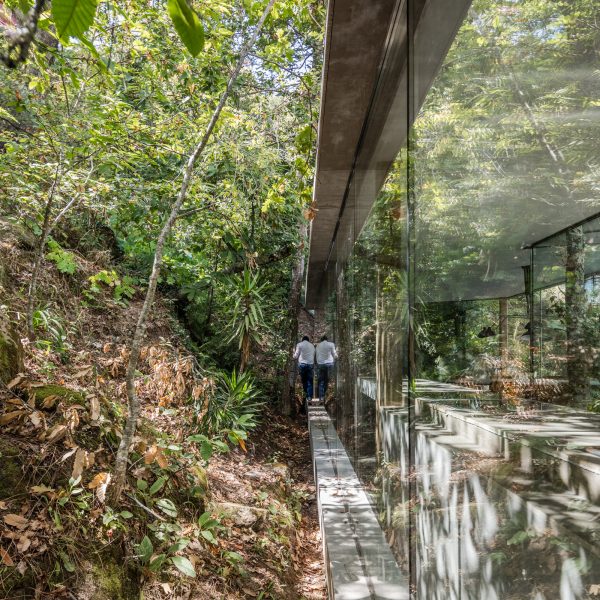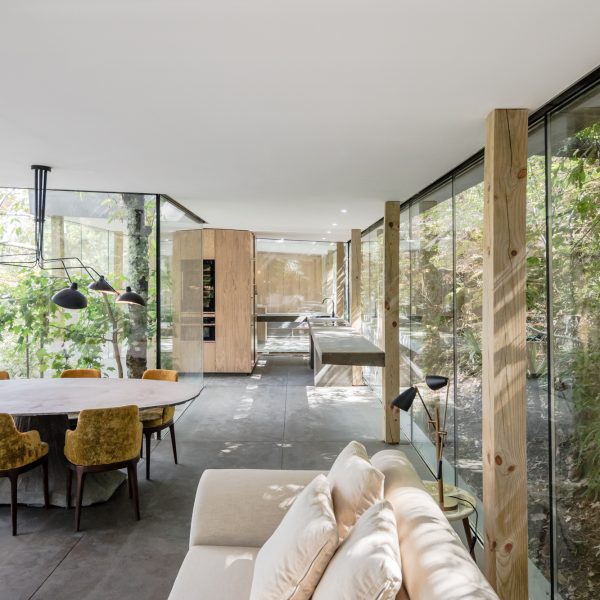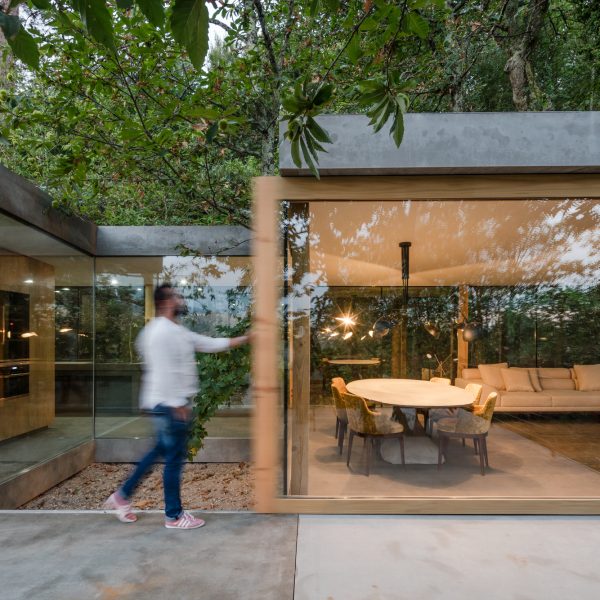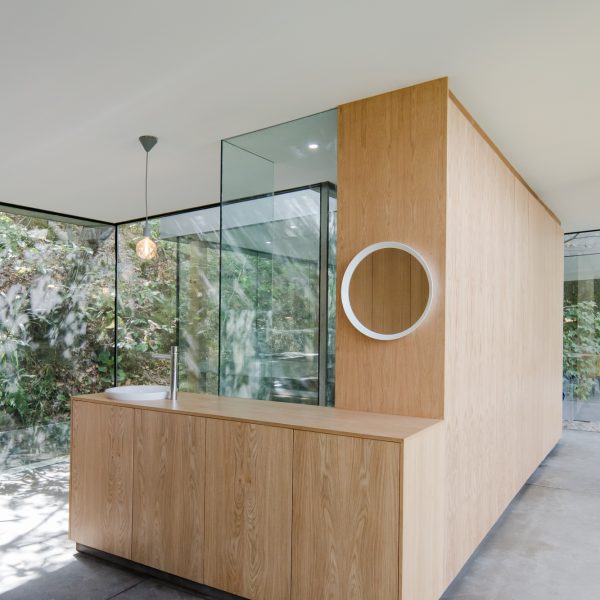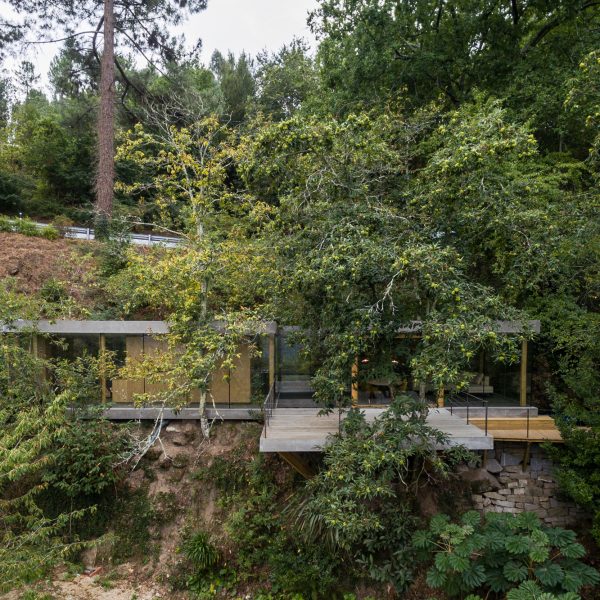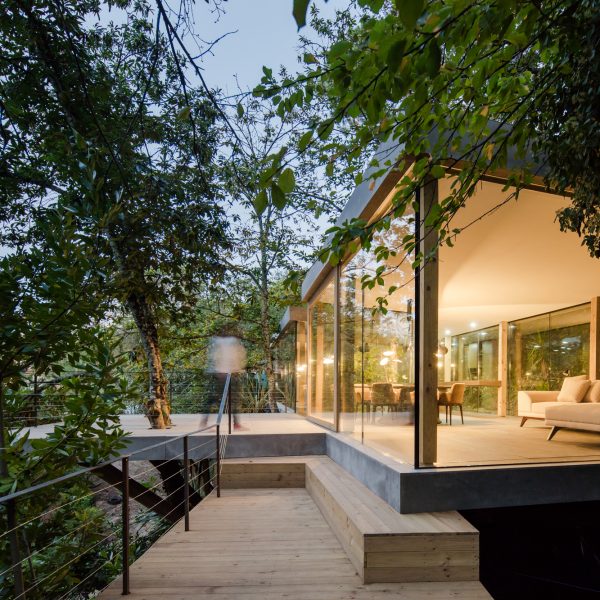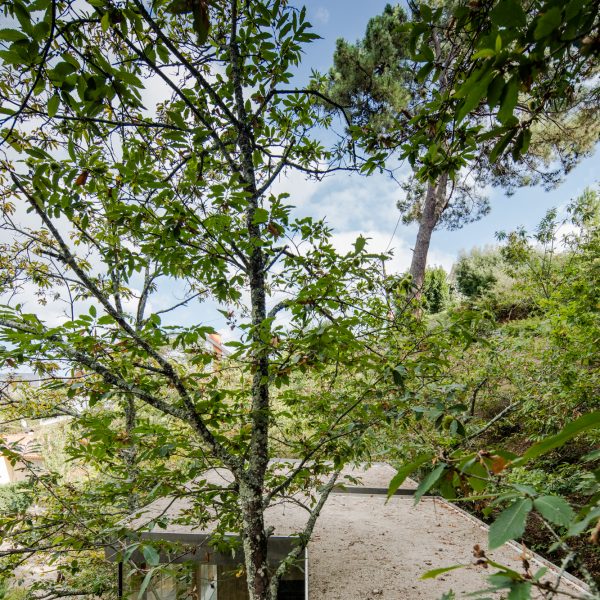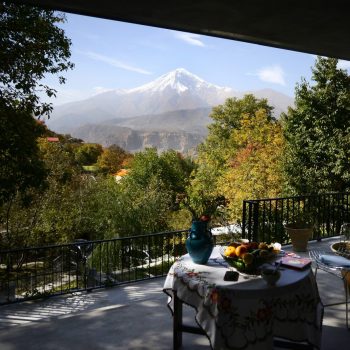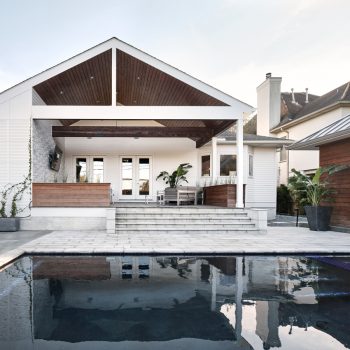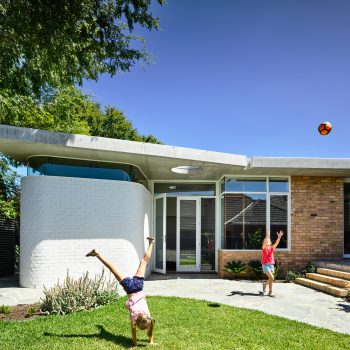It is almost redundant to write about Cloaked House. On one hand there is so much that could be said about it and on the other, the most salient features are, ruthlessly and wonderfully self-evident. This dichotomy in part, reflects the enigma that is Cloaked House.
The initial viewing produced gasps of wonder and envy – so simple and elegant that it defies description, and so elementary that it begs the question, “Why are we not building more houses of this kind, especially in hot climates?” And, no garden necessary.
In both physical and psychological terms Cloaked House answers a lot of questions going into the 21st century.
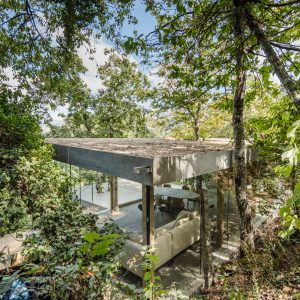 The most obvious positive aspect is sustainability Energy consumption in Cloaked house will be lessened considerably due to covering of forest, and additionally the concrete slabs for roof and floor. Concrete is a natural insulator and it is low in emissions. The glass is double-glazed which can improve energy efficiency by up to 50% as well as reducing condensation inside. The surrounding forest would not only filter the air but evaporation would cool the interiors of the house. With such a light and uncomplicated footprint, air flow would do its work also.
The most obvious positive aspect is sustainability Energy consumption in Cloaked house will be lessened considerably due to covering of forest, and additionally the concrete slabs for roof and floor. Concrete is a natural insulator and it is low in emissions. The glass is double-glazed which can improve energy efficiency by up to 50% as well as reducing condensation inside. The surrounding forest would not only filter the air but evaporation would cool the interiors of the house. With such a light and uncomplicated footprint, air flow would do its work also.
The architect’s concept is non-invasive in every respect; the house has been accommodated to the site, the concrete slabs have been tailored to allow for large trees on location to be left in place and manifestly, no landscaping is required in this stunning natural environment. This is a house that synchronises the requirements of the owner with a sustainable future. Going into the 21st century this is not only preferable but necessary. It is a recognition that man needs to leave natural environments alone as much as possible if our planet is to survive the effects of climate change.
Apart from the positive environmental effects, so much can be said in terms of the positive values of this house on the spiritual health of the inhabitants. Whether we realise it or not, communing with nature, is spiritually rewarding and also stress relieving. Solitude would take on new meaning because being “in nature” is the point of the exercise; the downside would be the endless distractions both flora and fauna would provide (as well as never wanting to leave home). This house is first and foremost a sanctuary – a calming boon to the pressures of the outside world. Such pressures would begin to fall away as soon as you drew near.
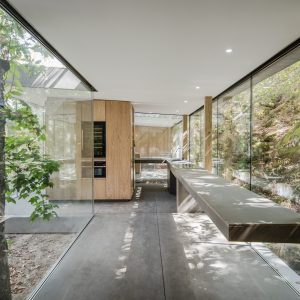 Physically, the house is elementary in the extreme and perhaps proof that architecture is leading the way in terms of promoting sustainable outcomes with concomitant acknowledgement that we cannot keep expanding the parameters of consumption in the built environment. The latter part of the 20th century and the first decade of the 21st century taught us about over-consumption and large houses that have everything that opens and shuts and a bathroom for every bedroom. Hopefully the raison d’etra or rationale is moving towards scaling back consumption (realistically, what house needs eight bathrooms?), practicing sustainability while caring for and nurturing the environment.
Physically, the house is elementary in the extreme and perhaps proof that architecture is leading the way in terms of promoting sustainable outcomes with concomitant acknowledgement that we cannot keep expanding the parameters of consumption in the built environment. The latter part of the 20th century and the first decade of the 21st century taught us about over-consumption and large houses that have everything that opens and shuts and a bathroom for every bedroom. Hopefully the raison d’etra or rationale is moving towards scaling back consumption (realistically, what house needs eight bathrooms?), practicing sustainability while caring for and nurturing the environment.
Cloaked House is sedate in every way, with only a small internal rectangle to house amenities and ablutions; this is a house that prevents accumulating stuff because self-evidently there is nowhere to put it. The kitchen bench is concrete and right next to the oven so nothing extraneous. A smaller house reduces consumption and thus the carbon footprint, use or build only what you need.
But none of the above is what is intrinsically wonderful about this house. It is exciting because it is effectively a tree house; the experience of stormy weather would provide a one off scintillating experience. Stunning dappled light patterns would play out from morning to night. As mentioned above you are communing closely with both native flora and fauna not to mention both the experience of and smell of clean air, all of which adds up to visionary thinking. It is a vision that brings people back in line with nature not controlling it but leaving it alone to work its magic while reminding us it is more important than our desire for the next new thing.
A FEW STATISTICS:
The Australian government reports food waste at 20 billion dollars per annum. https://goo.gl/uXM81w Between Australian consumers (private and commercial/industrial) close to 6 million tons of food waste per year makes its way to landfills in Australia (https://goo.gl/ySTRuJ), and that is known waste. Although energy consumption and GHG emissions rose in the decade to 2015, the 2020 target is on track to deliver still lower gross emissions than predicted in 2016: the target calculated at 5% less than 2000 emissions. By 2030 Australia is hoping to achieve targets of 26 – 28% lower than 2005 levels. (https://goo.gl/NFrwk9). This is great news, nevertheless, landfill continues to grow and methane production (a big contributor to GHG) from organic matter in landfills an increasing problem in Australia.






